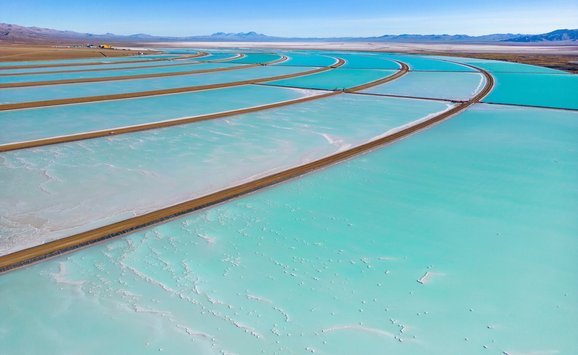Although the United States is blessed with some of the world's best supplies of freshwater, they are far from infinite. Indeed, how and how much we use "our" water will have long-term consequences directly affecting the welfare of later generations.
Current actions that prejudice future generations fall into three main groups: consumption of underground water supplies in excess of natural recharge rates, contamination of water through toxic and other chemicals, and stream diversion on a large scale.
Using more than nature provides
Although most people think of fresh water in terms of what they can see, as in lakes and rivers, large amounts are concealed underground in aquifers—water-bearing strata of permeable rock, sand, or gravel. But groundwater in aquifers can be pumped out faster than nature replenishes them. If withdrawal rates are high enough for long enough, aquifers become depleted, leading in turn to lower levels (and possible depletion) of surface-water streams that are linked hydrologically to them. In effect, groundwater used more rapidly than it is replaced is mined, just as are hard-rock minerals.
To the extent that aquifers cover a large area, as does the Ogallala in the U.S. High Plains, ground-water mining may have a significant impact on successive generations of users, who may have to pay heavily for other water resources. The same is true whenever the present generation depletes the water in non rechargeable aquifers, as is occurring over large parts of northern Africa, or when oil production leaves a significant portion of ground-water trapped and inaccessible for future use. In all such cases, the major effect is to raise the real price of water resources for future generations.
The long-term effects of pollution
The pollution of both surface- and ground-water supplies poses perhaps the most serious problem of fairness, or equity, among generations. Persistent toxic contamination of streams and lakes kills plants, fish, and other forms of animal life and makes impossible some water uses, such as drinking and swimming. The problem is particularly insidious in lakes, because the time needed for nature to eliminate even present levels of toxic pollutants may be exceedingly long. For example, it will be centuries before natural processes remove existing toxic contaminants from Lake Superior and Lake Michigan.
Toxic contamination of ground-water supplies effectively makes them unavailable to future generations. Moreover, it may impose significant health costs on those today who have used contaminated water in ignorance of its polluted condition. Many municipalities that depend on groundwater for drinking now are finding it extremely costly to develop alternative supplies.
Once aquifers are contaminated, it becomes very difficult and expensive to clean them or even to stop the spread of the contaminants. Because groundwater moves slowly—only several inches per year—today's contamination may not be felt for decades. But then its effect may be surprisingly widespread: the water in aquifers normally moves toward streams on the surface, which means that contamination of groundwater eventually can spread to surface-water streams, thereby polluting both sources of supply. For example, persistent toxic pollution from landfills is a major current problem facing the Great Lakes. Pollutants both enter the lakes directly and seep into rivers that flow into them; they are also transported there by atmospheric processes.
Diverting from the future
Finally, large-scale consumptive diversion of surface waters also may limit the availability of future supplies. Consider what may happen when large volumes are diverted. People living in the area of the water's origin will have far less water available to them, and the hydrological links between surface-water streams and ground-water aquifers may be damaged. In some cases, salt water may intrude upstream from a river mouth because fresh water no longer flows in sufficient amounts to keep the seawater back. Or lower water levels may increase the concentration of pollutants and thereby reduce or eliminate sport and commercial fishing, say, or swimming or boating. Both impose high remedial costs on future generations.
Principles of fairness
If followed, three principles can ensure our children and grandchildren enough good water. These are conservation of options, conservation of quality, and equitable access and use.
Conservation of options means that we should retain as wide a variety of freshwater sources as possible. It argues against depleting aquifers by exploiting them in excess of recharge rates. (It also encourages the use of groundwater supplies up to the recharge rate, because otherwise they would be wasted while other sources are depleted.) Conservation of options also means conserving the availability of surface-water supplies by, for example, preventing substantial runoff, which produces siltation and reduces stream flow.
Conservation of quality means a ban on persistent toxic contamination of streams and lakes and of aquifers that are linked hydrologically to streams. For a ban to be effective, it is essential to take a basin-wide ecosystem approach to pollution control: as experience with the Great Lakes reveals, sources of pollution may be located away from water, as in landfills, and pollutants may be transported many miles by atmospheric processes before being deposited in lakes or streams. Conservation of quality also cautions against water withdrawals that may result in the pollution of water supplies, as with saline intrusion into groundwater, that will be expensive or impossible for future generations to repair.
Issues of equitable access and use arise both among generations and among members of the same generation. Conservation of options and of quality are intended to ensure that all generations have an equal relationship to the resource. Among people alive today, equitable access and use suggest that when states share lakes or international rivers they adopt procedures that enable all to share in the benefits.
Such rights should be defined in the context of the whole hydrological unit and the ecosystem in which it exists, and in full recognition of the links between quantity and quality. The implications of any given action should be addressed in this broader context.
Managing for future generations
Preventing actions that deplete the resource or degrade its quality will be far more effective and less costly than will remedial efforts or attempts to impose liability for damage. This means giving priority to identifying dangers, assessing the likely effects of proposed actions, monitoring the consequences of actions already taken, and consulting among affected parties. It also means increasing the efficient use of water, including recycling it for different uses.
The first step should be to monitor water quality where it is not already being done. Monitoring is especially important for groundwater, where it may take from years to decades for the full effects of pollution to be felt. Eventually, it will be necessary to standardize the collection of data and to set up networks for coordinating information. For certain lakes and international river basins, it may be appropriate to establish an ombudsman who can warn of dangers in the ecosystem, respond to complaints about threats to water quality, and mobilize local support for conserving the resource.
Because toxic contamination is the most serious threat to future generations, it is important that countries regulate it on a national, bilateral, or multilateral basis, as appropriate. For some pollutants, it will be enough to set water quality standards; others will have to be banned from disposal in water. Sometimes it may also be appropriate to set different standards of quality for aquifers—some may be needed for drinking water, while others may be dedicated to agricultural or industrial uses, which can tolerate lower standards of quality.
Most strategies to conserve freshwater resources can and should be implemented at the bilateral or regional level. Only for certain tasks—prominently, gathering and exchanging data on toxic contaminants—will it be appropriate to establish international mechanisms.
Historically, humankind has been both clever and lucky in developing and using natural resources. When scarcity threatens and resource prices jump, efficiency in use rises correspondingly or substitutes are found or invented that can do the same job, frequently better or more cheaply than did the now-scarce resource. But water is different. Our actions now have long-term effects on the quantity and quality of the resource. Technology may offer payoffs to some people in the future, such as affordable, large-scale desalination of sea-water. But there are no substitutes for fresh water, and we cannot count on the ingenuity of our heirs to produce what we do not leave them. Water is vital, and simple fairness demands that we conserve it for future generations.

Edith Brown Weiss, professor of law at Georgetown University Law Center, is a visiting scholar at Resources for the Future. This article is based upon the author's research project on international law, common patrimony, and intergenerational equity, sponsored by the United Nations University in Tokyo, Japan.







